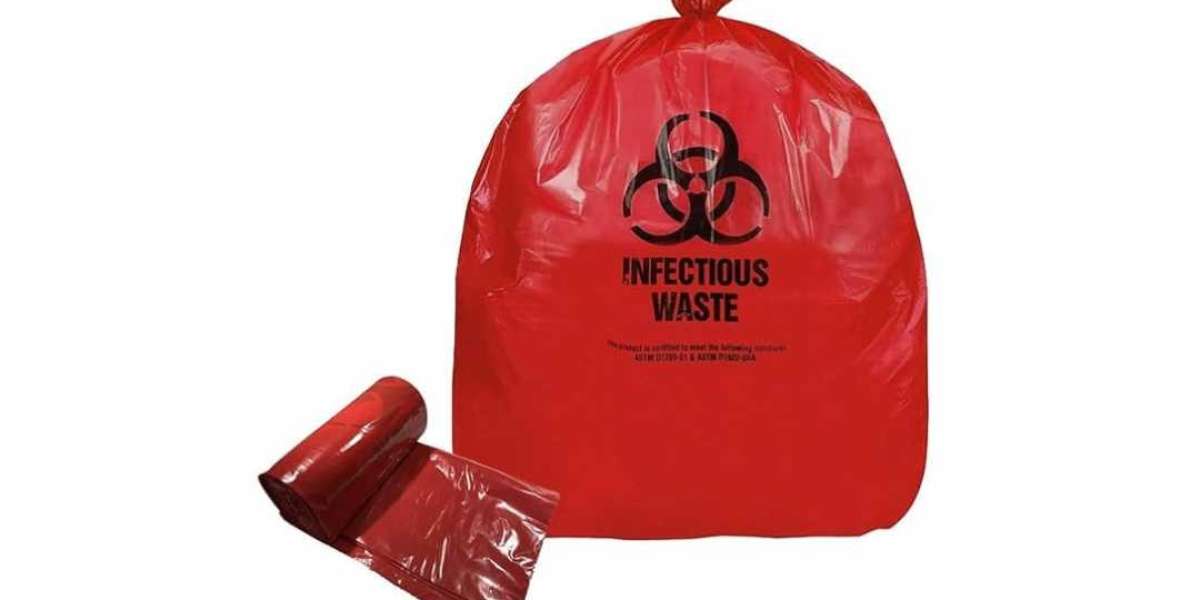One significant element in this aspect is the use of the Biohazard Plastic Bag, which is specifically designed to safely contain and dispose of materials that pose a health risk due to infections or other hazardous attributes. These bags are easy to identify due to their distinctive colors and biohazard symbols, making it clear that they contain potentially dangerous materials. Understanding the properties and functions of these bags is crucial for healthcare facilities, laboratories, and other establishments that generate biohazardous waste, ensuring compliance with regulations and protection for personnel and the environment.
Types of Biohazard Bags
Biohazard plastic bags come in various styles and materials to suit specific needs. Generally, they can be classified based on the types of waste they are designed to handle. For instance, some bags may be reinforced for solid waste, while others are made more flexible for liquid waste. The thickness and durability of the material vary, allowing for safe handling of sharps or liquid specimens. It’s crucial for organizations to adopt the right type of biohazard bag based on their waste disposal requirements, leading to increased safety and efficiency in waste management processes.
Key Regulations for Bio-Medical Bags
The handling and disposal of Bio-Medical Waste Bags are under strict regulation. Health organizations worldwide, including WHO and OSHA, have laid down guidelines for the classification, storage, treatment, and disposal of such waste. These regulations aim to minimize environmental impacts and enhance worker safety. For healthcare facilities that produce bio-medical waste, ensuring compliance is not just about legal adherence; it's also about preserving public health and maintaining the integrity of stakeholders involved. Therefore, continual education and training on suitable practices are vital for all employees involved in waste management.
Importance of Compliance and Safety Training
Effective waste management cannot be achieved without comprehensive safety training. Organizations must implement structured programs that educate personnel on using bio-medical waste bags effectively. Training should cover waste segmentation, proper disposal protocols, and personal protective equipment (PPE) usage. When employees understand the importance of compliance and the potential risks associated with improper waste handling, they become more conscientious in their roles. This awareness ultimately contributes to a safer work environment and protects the community and ecological systems from potential hazards.
Environmental Considerations in Waste Disposal
The ecological impact of biohazard waste management cannot be understated. Many communities are increasingly concerned about how waste disposal facilities handle hazardous waste. The decomposition of improperly disposed materials can lead to soil and water contamination, posing risks to local flora and fauna. Consequently, using appropriate bio-hazard bags reduces the chance of environmental harm significantly. Many modern bio-medical waste solutions incorporate incineration technologies that minimize residual waste and limit harmful by-products, aligning with sustainability goals and enforcing eco-friendly practices.
Selection Criteria for Quality Waste Management Solutions
Choosing the right waste management strategy and supplies—like bio-medical waste bags—is paramount. Companies should seek out experienced manufacturers who understand industry regulations and can provide reliable products. Quality should not be compromised; hence, organizations must examine the bag's specifications in terms of strength, durability, and leak-proof features. Furthermore, it is beneficial to partner with bio-medical waste bags manufacturers who offer ongoing support and insights into best practices for waste segregation, disposal, and disease prevention.
Innovation and Technology in Waste Management
The field of biohazard waste management has witnessed significant advancements, driven by technological innovation. Modern solutions now include smart waste bins equipped with sensors that monitor waste levels and temperature to prevent breakdowns. Additionally, the rise of biodegradable bags is gaining traction, promising a more sustainable approach to biohazard waste management. Such innovations provide opportunities for organizations to improve efficiency, reduce risks, and incorporate more environmentally friendly practices. Investing in cutting-edge solutions can ultimately result in long-term cost savings and improve public perception of waste management strategies.
Concluding Thoughts on Waste Management Strategies
As organizations continue to grapple with evolving waste management challenges, it is crucial to prioritize the use of high-quality Bio Medical Waste Bags Manufacturers. Engaging with leading bio-medical waste bags manufacturers for reliable products ensures compliance with safety standards and helps mitigate risks associated with hazardous waste. Collaborating with these manufacturers can further enhance knowledge sharing and foster innovations that streamline disposal processes. Ultimately, a combination of proper training, thoughtful selection of waste management supplies, and compliance with regulations will position organizations favorably in the ongoing mission to promote health and environmental wellness.
Frequently Asked Questions
1. What materials are typically used in the production of biohazard plastic bags?
Biohazard plastic bags are usually made from high-density polyethylene or similar materials that offer strength, durability, and puncture resistance, ensuring safe containment of hazardous waste.
2. Are there color-coding standards for bio-medical waste bags?
Yes, color-coding is often utilized; typically, yellow bags are used for infectious waste, while red bags may indicate waste that requires special disposal methods, such as sharps.
3. What should healthcare facilities consider when selecting waste management partners?
Facilities should evaluate the supplier's compliance with local regulations, the quality of their waste disposal systems, customer service, and their ability to provide ongoing education and support.
4. Can bio-hazard bags be recycled after use?
No, bio-hazard bags are not recyclable due to the potential contamination from hazardous materials; they should be disposed of according to specific waste management protocols to ensure safety.














